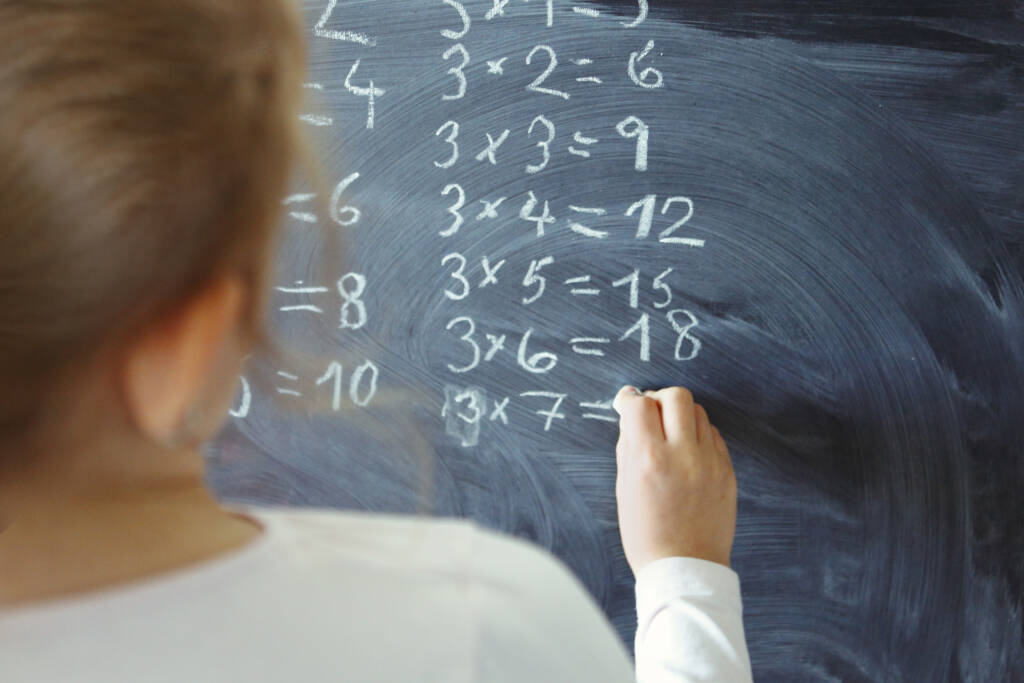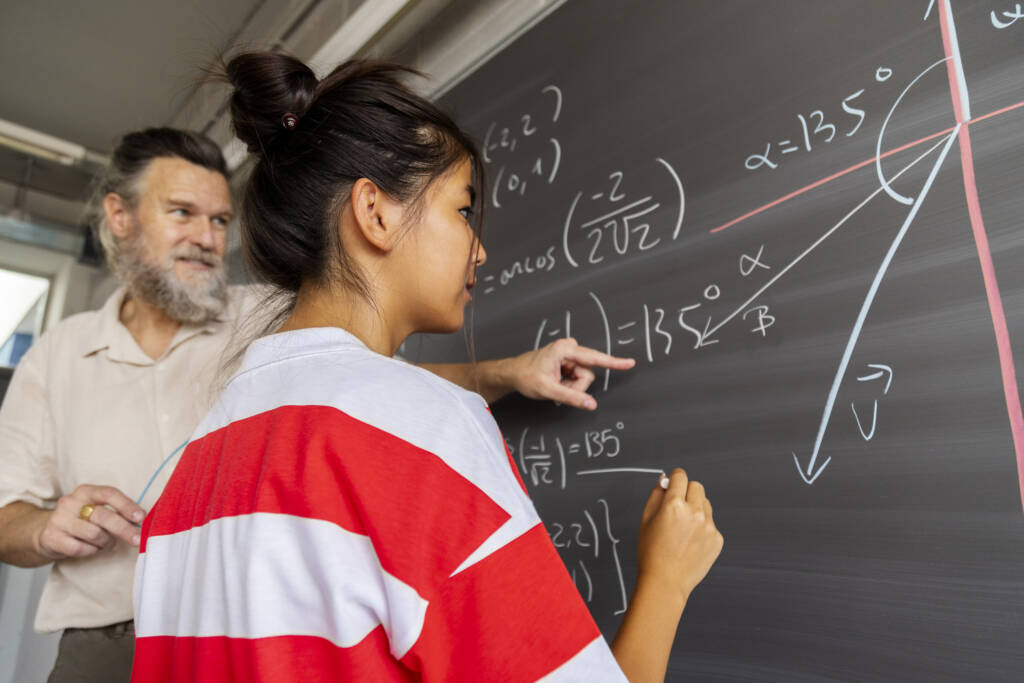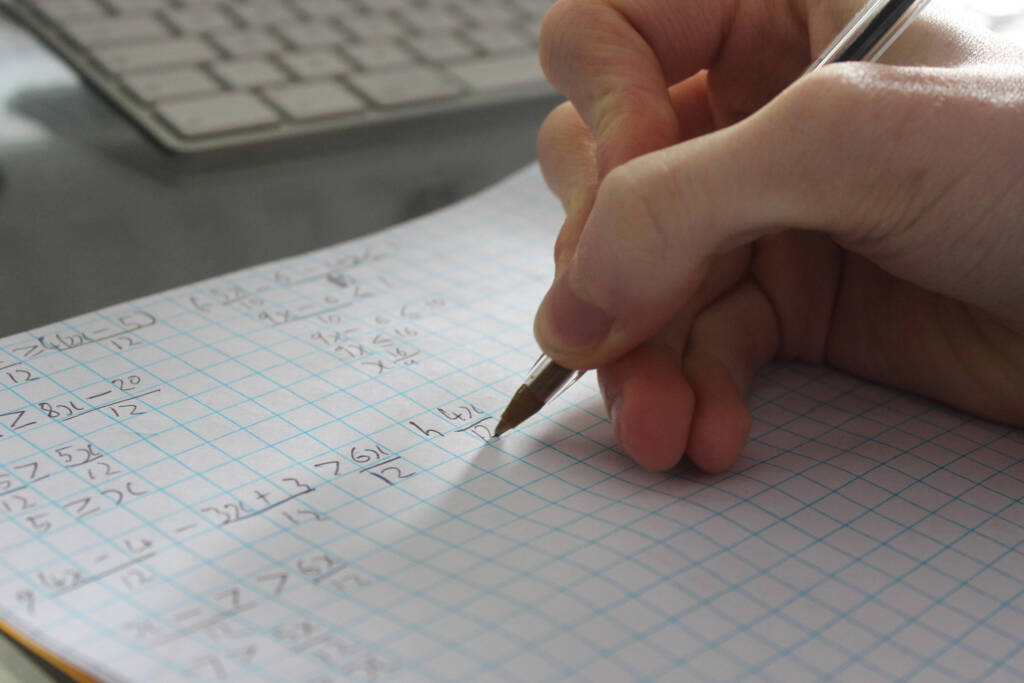
Middle School Math 1/Middle School Math 1 Advanced (Grade 6)

Middle School Math 1 is designed to engage students at every turn by giving students opportunities to demonstrate their knowledge of number manipulation by applying it to real-world scenarios. The course is packed with engaging activities that reinforce and let students practice the skills they learn throughout the course. Interactive learning and innovative videos keep the students engaged throughout.
The instruction in this course focuses on four critical areas:
(1) connecting ratio and rate to whole number multiplication and division, and using concepts of ratio and rate to solve problems
(2) completing an understanding of division of fractions and extending the notion of number to the system of rational numbers, which includes negative numbers
(3) writing, interpreting, and using expressions and equations
(4) developing an understanding of statistical thinking.
The instruction in the advanced course focuses on two additional areas:
(1) developing an understanding of and applying proportional relationships
(2) developing an understanding of operations with rational numbers and working with expressions and linear equations.
Major Topics and Concepts
DECIMALS AND FRACTIONS
- Adding and Subtracting Decimals
- Multiplying Decimals
- Division
RATIOS AND RATE REASONING
- Understanding a Ratio
- The Unit Rate
- Equivalent Ratios
- Percentages
- Measurements
- Unit Conversions
- Complex Unit Rate Advanced
RATIONAL NUMBERS
- GCF and LCM
- Positive and Negative Numbers
- The Number Line
- Ordering of Numbers
- The Absolute Value
- Applying the Number Line Advanced
- Adding and Subtracting Rational Numbers Advanced
- Multiplying Rational Numbers Advanced
- Dividing Rational Numbers Advanced
THE COORDINATE PLANE
- Ordered Pairs
- Plotting on the Coordinate Plane
- Ratios and the Coordinate Plane
- Applications with Coordinates
- Characteristics of a Proportion Advanced
AREA
- Area of Triangles
- Area of Quadrilaterals
- Area of Polygons
- Shapes on the Coordinate Plane
- Surface Area of Prisms
- Surface Area of Pyramids
EXPRESSIONS
- Numerical Expressions
- Algebraic Expressions
- Parts of an Expression
- Evaluating Algebraic Expressions
- Algebraic Properties
- Equivalent Expressions
- Properties of Operations Advanced
- Rewriting Expressions Advanced
EQUATIONS
- Solutions to Equations and Inequalities
- Applications with Expressions
- Solving Equations I
- Solving Equations II
- Inequalities
- Dependent and Independent Variables
- Analyzing Relationships
- Equations for Proportional Relationships Advanced
- Applications with Ratios Advanced
- Applications with Percentages Advanced
UNDERSTANDING DATA
- Statistical Questioning
- Measurements of Data
- Dot Plots and Histograms
- Box Plots
- Summarizing Data
- Data with Outliers
Competencies
Decimals
Students will demonstrate an understanding of decimals by solving problems involving addition, subtraction, multiplication, and division of decimals and explaining place value location and rounding of decimals.
Ratios, Rates, and Percents
Students will demonstrate an understanding of ratios, rates, and percentages by describing ratios and rates and solving problems involving ratios, rates, and percentages.
Rational Numbers
Students will demonstrate an understanding of rational numbers by describing factorization, simplifying fractions with LCM and GCF, and explaining statements of order in real-world contexts.
Coordinate Plane Fundamentals
Students will demonstrate an understanding of coordinate plane fundamentals by describing elements of the coordinate plane, explaining coordinate pairs, and solving real-world problems involving the coordinate plane.
Area
Students will demonstrate an understanding of area by describing polygons, explaining how to find the area of polygons and surface area of solids, and solving real-world problems involving area.
Fundamentals of Algebraic Expressions
Students will demonstrate an understanding of the fundamentals of algebraic expressions by describing algebraic expressions, explaining algebraic properties, and solving algebraic expressions involved in real-world situations.
Linear Equations and Inequalities
Students will demonstrate an understanding of linear equations and inequalities by explaining the process of solving linear equations, explaining the process of solving inequalities, and solving problems involving linear equations and inequalities.
Data Measurement, Analysis and Graphing
Students will demonstrate an understanding of data measurement, analysis and graphing by formulating a statistical question, explaining data measurement, and summarizing statistical data.
Projects allow students to demonstrate competence and understanding of concepts and skills by completing a career-related task. For example, the assignment might be to create a mural, a package design, a speech, a film review, or a movie set – you name it! These creative projects are about applying your learning acquired through in-depth research to real-world career tasks.
Each competency will be addressed through a project that is based on a real-life career task. Here are the careers you will explore: Tour Operator, Small Business Owner, Caterer, Sports Analyst, Park Ranger, Event Planner, Residential Painter, and Nutritionist.
Projects
Competencies
Decimals
Students will demonstrate an understanding of decimals by solving problems involving addition, subtraction, multiplication, and division of decimals and explaining place value location and rounding of decimals.
Ratios, Rates, and Percents
Students will demonstrate an understanding of ratios, rates, and percentages by describing ratios and rates and solving problems involving ratios, rates, and percentages.
Rational Numbers
Students will demonstrate an understanding of rational numbers by describing factorization, simplifying fractions with LCM and GCF, and explaining statements of order in real-world contexts.
Coordinate Plane Fundamentals
Students will demonstrate an understanding of coordinate plane fundamentals by describing elements of the coordinate plane, explaining coordinate pairs, and solving real-world problems involving the coordinate plane.
Area
Students will demonstrate an understanding of area by describing polygons, explaining how to find the area of polygons and surface area of solids, and solving real-world problems involving area.
Fundamentals of Algebraic Expressions
Students will demonstrate an understanding of the fundamentals of algebraic expressions by describing algebraic expressions, explaining algebraic properties, and solving algebraic expressions involved in real-world situations.
Linear Equations and Inequalities
Students will demonstrate an understanding of linear equations and inequalities by explaining the process of solving linear equations, explaining the process of solving inequalities, and solving problems involving linear equations and inequalities.
Data Measurement, Analysis and Graphing
Students will demonstrate an understanding of data measurement, analysis and graphing by formulating a statistical question, explaining data measurement, and summarizing statistical data.

